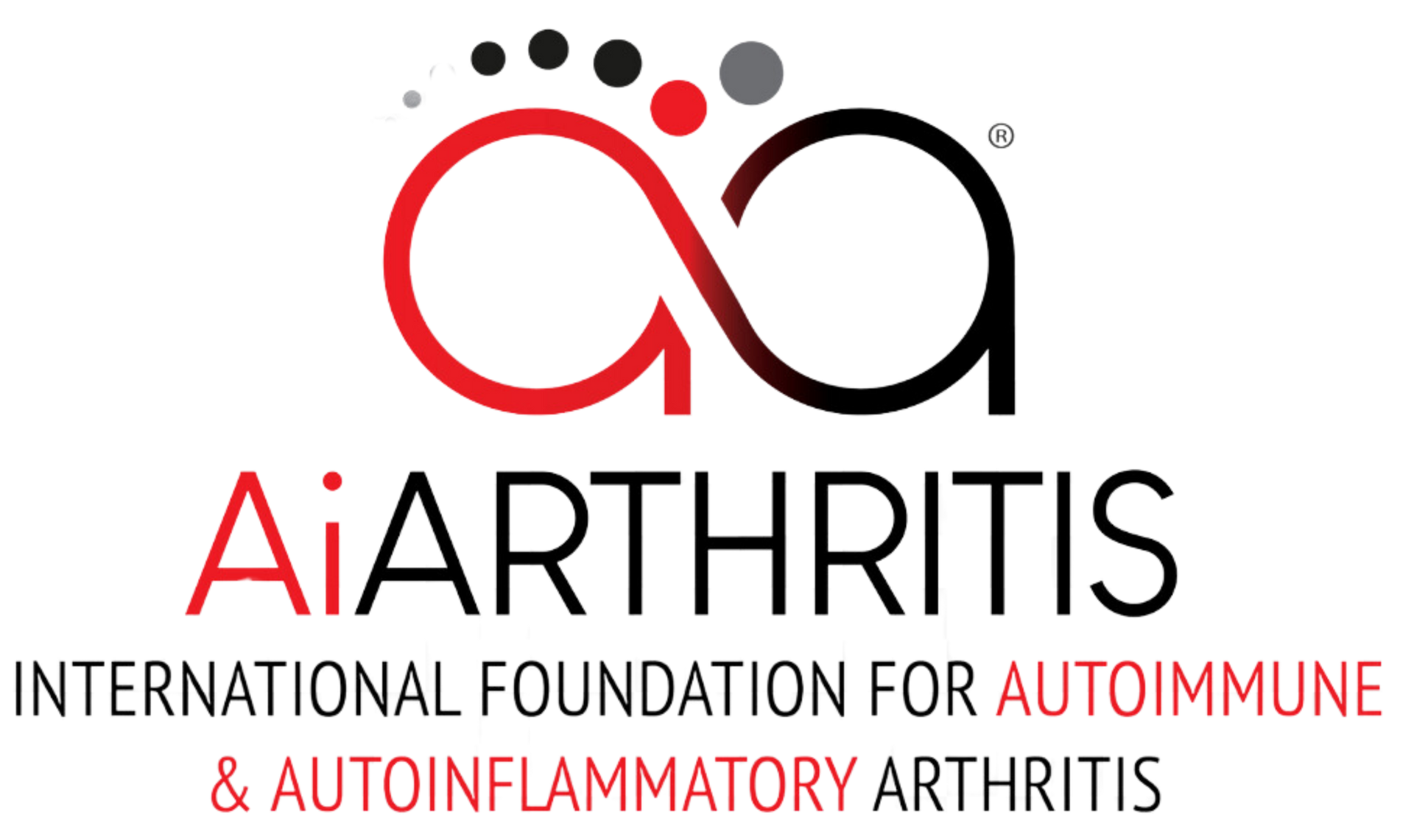Rare AiArthritis Disease Abstracts at ACR24
Latest research on rare AiArthritis Disease presented at the ACR24 conference.
Mixed Connective Tissue Disease
Mixed Connective Tissue Disease (MCTD) is a rare autoimmune disorder that combines features of several other connective tissue diseases, such as systemic lupus erythematosus (SLE), scleroderma, and polymyositis. It is sometimes referred to as an "overlap" disease because it shares characteristics with these conditions. Symptoms can include Raynaud's phenomenon (where fingers or toes turn white or blue in response to cold or stress), joint pain and swelling, muscle weakness, and skin changes. MCTD can also affect internal organs, such as the lungs, heart, and kidneys
This multicenter retrospective study evaluates therapeutic strategies for patients with Mixed Connective Tissue Disease (MCTD) within the French MCTD cohort. By analyzing treatment outcomes across multiple centers, researchers aim to identify the most effective approaches for managing MCTD, considering the variability in patient responses and the potential for adverse events. The study underscores the importance of personalized treatment plans and aims to enhance the overall management of MCTD through evidence-based practices.
All Mixed Connective Tissue Disease Abstracts
Antisynthetase Syndrome
Antisynthetase Syndrome (ASS) is a rare autoimmune disorder characterized by inflammation in various parts of the body due to the immune system mistakenly attacking its own tissues. It often involves muscle inflammation (myositis), polyarthritis (inflammation of multiple joints), interstitial lung disease (ILD), mechanic's hands (thickened, cracked skin on the palms and fingers), and Raynaud's phenomenon (color changes and numbness in fingers and toes in response to cold). The exact cause of ASS is unknown, but it is associated with antibodies against aminoacyl-tRNA synthetases, with anti-Jo-1 being the most common.
This study investigates the association between the rs35705950 promoter variant of the MUC5B gene and the development of usual interstitial pneumonia (UIP) in patients with antisynthetase syndrome (ASSD). The research found that carrying this genetic variant significantly increases the risk of UIP in ASSD patients, highlighting the importance of genetic factors in the progression of lung involvement in this autoimmune condition.
View all ACR abstracts on Antisynthetase Syndrome
Enteropathic Arthritis
Enteropathic Arthritis (EnA), also known as enteropathic arthropathy, is a type of chronic inflammatory arthritis associated with inflammatory bowel diseases (IBD) such as Crohn's disease and ulcerative colitis. It causes joint inflammation and tenderness, primarily affecting the arms, legs, and sometimes the spine
This study explores the coexistence of Raynaud's phenomenon, morphea, or scleroderma in patients with spondyloarthritis (SpA). By analyzing data from a retrospective cohort at Houston Methodist Hospital, researchers identified a unique phenotype characterized by the overlap of these conditions. The majority of affected patients were Caucasian females with a negative HLA-B27 status, suggesting distinct clinical features compared to typical SpA cases.
All Enteropathic Arthritis Abstracts
Chronic Nonbacterial Osteomyelitis
Chronic Nonbacterial Osteomyelitis (CNO) is a rare, inflammatory bone disorder that primarily affects children and adolescents, but can also be seen in adults. Unlike bacterial osteomyelitis, CNO is not caused by an infection, but rather an abnormal immune response leading to bone inflammation. The condition is characterized by recurrent episodes of bone pain and swelling, often involving the long bones of the legs, pelvis, and spine. The exact cause of CNO remains unknown, but it's believed to involve genetic, immunological, and environmental factors.
All Chronic Nonbacterial Osteomyelitis Abstracts
This study evaluates the absolute agreement and inter-rater reliability of a web-based standardized scoring tool called CROMRIS (ChRonic nonbacterial Osteomyelitis Magnetic Resonance Imaging Scoring) for assessing MRI images from children with Chronic Nonbacterial Osteomyelitis (CNO). The tool aims to provide a user-friendly interface for radiologists to consistently score specific features of bone and soft tissue inflammation. The study involved three pediatric radiologists independently scoring MRI scans, and the results showed substantial agreement among the raters
This study focuses on the validation of the Patient-Reported Outcomes Measurement Information System (PROMIS) pediatric measures for children with Chronic Nonbacterial Osteomyelitis (CNO), using data from the Chronic Nonbacterial Osteomyelitis International Registry (CHOIR). The PROMIS measures, which have been validated in other pediatric rheumatic diseases, were administered to children with CNO to assess their effectiveness in capturing patient-reported outcomes.
This study investigates osteoclastogenesis (the formation of osteoclasts, which are cells that break down bone tissue) from peripheral blood mononuclear cells (PBMCs) in children with Chronic Nonbacterial Osteomyelitis (CNO) and compares it to healthy children. The research aims to understand whether there are differences in the osteoclast formation process between these two groups. The findings suggest that osteoclastogenesis in children with CNO is similar to that in healthy children, indicating that other factors might be contributing to the disease's pathology
This study explores the relationship between culture-negative infectious osteomyelitis (IO) and chronic nonbacterial osteomyelitis (CNO). It aims to understand the similarities and differences between patients initially diagnosed with culture-negative IO who later develop CNO. The research involves a retrospective chart review of patients diagnosed with culture-negative IO, comparing their clinical features, laboratory results, and responses to treatment with those who were later diagnosed with CNO. The findings could help improve early identification and treatment of CNO
To Biopsy or Not to Biopsy: Imaging Features of Chronic Nonbacterial Osteomyelitis of the Clavicle
This study, titled "To Biopsy or Not to Biopsy: Imaging Features of Chronic Nonbacterial Osteomyelitis of the Clavicle", investigates whether biopsy is necessary for diagnosing Chronic Nonbacterial Osteomyelitis (CNO) of the clavicle. The researchers conducted a retrospective chart review of patients with unifocal clavicular lesions, comparing clinical and imaging features between those diagnosed with CNO and other conditions. They found that certain imaging features, such as multifocal lesions and specific MRI findings, could help distinguish CNO from other conditions, potentially reducing the need for biopsy
This study examines the factors associated with health-related quality of life (HRQOL) in adults with SAPHO syndrome and Chronic Nonbacterial Osteomyelitis (CNO). Using the EuroQol-5 Dimension instrument (EQ-5D-5L), researchers assessed HRQOL across five health dimensions: mobility, self-care, usual activities, pain/discomfort, and anxiety/depression. The study found that disease features like inflammatory arthritis, spine involvement, skin rash, and total musculoskeletal symptom score significantly impacted HRQOL. The findings highlight the importance of addressing these factors to improve the quality of life for adults with SAPHO-CNO.
This study focuses on the development and validation of a novel score system designed to guide diagnostic procedures in children suspected of having Chronic Nonbacterial Osteomyelitis (CNO). The goal is to identify subsets of patients with either a very low or very high probability of CNO before deciding whether to perform a bone biopsy. This scoring system aims to improve diagnostic accuracy and reduce the need for invasive procedures.
Systemic Scleritis
Systemic Scleritis is a severe, chronic inflammatory disease that affects the sclera, the white outer layer of the eye. It often causes intense pain, redness, and swelling, and can lead to serious complications, including vision loss if left untreated. Systemic Scleritis is frequently associated with underlying autoimmune conditions, such as rheumatoid arthritis, granulomatosis with polyangiitis, and systemic lupus erythematosus.
View all Systemic Scleritis Abstracts
The abstract discusses the role of rheumatologists in evaluating and treating scleritis, an inflammation of the white outer layer of the eye. It highlights the challenge of distinguishing between infectious and immune causes of scleritis, as well as differentiating between systemic immune causes and those limited to the eye. The study evaluated patients diagnosed with various types of scleritis and categorized them based on immune or infectious etiology. The findings suggest that understanding the type of scleritis can help in identifying its cause and guiding appropriate treatment.
This abstract discusses the demographic and ocular characteristics of scleritis patients with systemic rheumatologic diseases, based on data from the IRIS Registry (Intelligent Research in Sight). The study found that 30-40% of scleritis cases are associated with systemic autoimmune diseases, and these patients often have worse visual outcomes. The most common associated condition was rheumatoid arthritis. The study also noted that anterior scleritis was the most frequent subtype among these patients, and there were high rates of comorbid conditions like uveitis and macular edema.
This abstract discusses a retrospective cross-sectional study that examined racial disparities in ocular complications among patients with systemic rheumatic diseases. The study found that Black and Asian patients were disproportionately affected by ocular complications such as keratitis, scleritis, retinopathy, and optic neuropathy compared to other racial groups. These complications were associated with poorer in-hospital outcomes, including longer hospital stays, higher healthcare costs, and increased rates of non-home discharge
Sjögren's Disease
Sjögren's Disease is an autoimmune disorder in which the body's immune system mistakenly attacks its own moisture-producing glands. This primarily affects the salivary and lacrimal glands, leading to symptoms like dry mouth and dry eyes. People with Sjögren's can also experience fatigue, joint pain, and swollen glands. While the exact cause is unknown, it is believed to involve a combination of genetic and environmental factors.
View All Sjögren's Disease Abstracts
The study investigates the risk of mortality in patients with Sjögren's Disease compared to the general population. It identifies predictive factors of mortality, such as advanced age, male sex, and certain disease manifestations like parotid enlargement and vasculitis2. The study aims to provide insights into the causes of death and help improve patient management and outcomes
The study investigates the risk of mortality in patients with Sjögren's Disease compared to the general population. It identifies predictive factors of mortality, such as advanced age, male sex, and certain disease manifestations like parotid enlargement and vasculitis. The study aims to provide insights into the causes of death and help improve patient management and outcomes.
The study investigates the effects of hydroxychloroquine (HCQ) on QTc intervals in patients with rheumatic diseases such as Systemic Lupus Erythematosus (SLE), Sjögren's Disease, and Rheumatoid Arthritis (RA). After 12 weeks of treatment, there was a statistically significant increase in QTc intervals among patients, even without the use of other QT-prolonging medications or chronic kidney disease. However, no significant correlation was found between HCQ blood levels and QTc interval changes.
Using Social Listening to Understand the Patient Voice: The Daily Impacts of Sjögren’s Disease
The study explores how social media can provide insights into the daily struggles of people living with Sjögren's Disease. By analyzing 84,034 posts/comments from the Reddit community r/sjogrens over 11 years, researchers identified frequent activities of daily living (ADLs) such as eating, sleeping, and professional activities. They linked these ADLs to clinical concepts like dryness of mouth, pain, and fatigue, as well as emotions like fear. This study aims to better understand the real-world impact of Sjögren's Disease on patients' lives through their own words and experiences.
Sign up for our newsletters
International Foundation for AiArthritis
6605 Nottingham Ave.
St. Louis, MO 63109-2661
Tax ID: 27-1214308
Toll Free: 1-877-609-4226
Email: info@AiArthritis.org
Copyright 2024. All rights reserved. Information on this site is intended for informational purposes only Our foundation does not engage in the practice of medicine. Please consult a physician to obtain personal healthcare and treatment options. 501(c) 3 Nonprofit Tax ID: 27-1214308.






